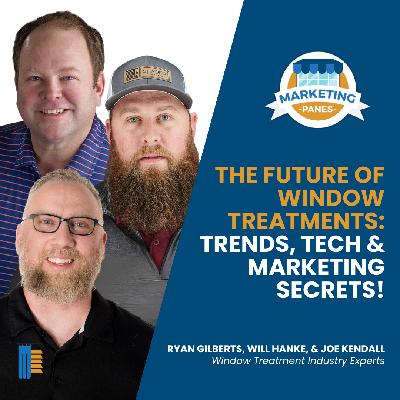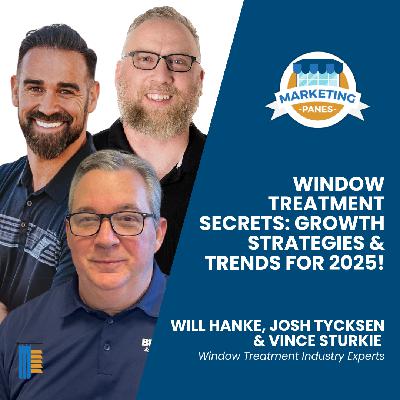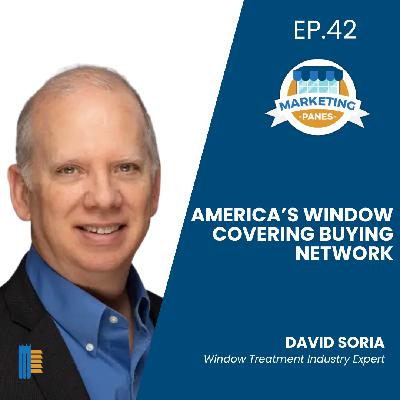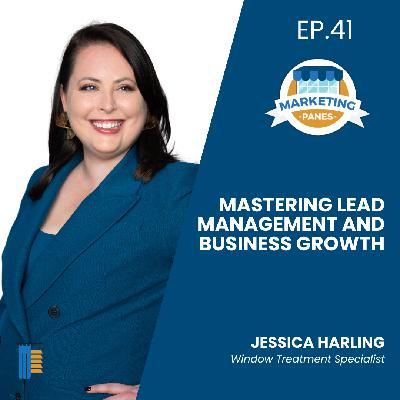Bought, Built, and Booming: a CEO’s Journey from Acquisition to Scaling a Blind & Shutter Factory
Description
Guest Profile: Ryan Murray
Ryan Murray is the owner & CEO of AAA Blind & Shutter Factory in Little River, SC. AAA is a fabricator and dealer of Shutters, Roller Shades and Blinds. Ryan comes from outside the window treatment industry with a diverse background in finance & accounting, sales & marketing and was most recently a General Manager for a large MedTech company. Ryan acquired AAA in 2024 by following the path of ETA (entrepreneurship thru acquisition), and has successfully grown the business 20% in his first year of ownership. Ryan plans to continue to grow AAA organically and inorganically with more acquisitions.
Other Notes/Links:
pssst…. want to be a guest on the show?
AAA Blind and Shutter Factory: Visit Website
Book Mentioned: Outgrow
Learn more about Entrepreneurship Through Acquisition (ETA): ryan.aaablinds@gmail.com
Video
https://youtu.be/XhDGVM13fY0
Click here to display Transcript
TRANSCRIPT
William Hanke (00:00 )
Hey everyone, welcome to another episode of Marketing Panes. This is episode number 45, the podcast where we talk to with real window treatment and awning service providers or business owners about their successes and struggles related to marketing their business. Today we’ve got a guest with some great insights that I’m excited to interview. His name is Ryan Murray. Ryan is the owner and CEO of AAA Blind Shutter Factory in Little River.
South Carolina. Is it okay if I call it AAA from now on? Okay. AAA is a fabricator and dealer of shutters, roller shades and blinds. Ryan comes from outside the window treatment industry with a diverse background in finance and accounting, sales, marketing, and was most recently a general manager for a large med tech company. Ryan acquired AAA in
Ryan Murray (00:31 )
Yeah, absolutely.
William Hanke (00:55 )
2024 by following the path of ETA and entrepreneurship through acquisition. going to jump into that in just a second. Ryan has successfully grown the business 20 % in his first year of ownership and he plans to continue to grow AAA organically and inorganically with more acquisitions. Ryan, thank you so much for being on.
Ryan Murray (01:19 )
Yeah, thanks Will, really excited to do this with you.
William Hanke (01:22 )
Yeah, yeah, your whole story has really intrigued me. I know that you acquired AAA specifically about a year ago through what you call entrepreneurship through acquisition. So what drew you to the window treatment industry and specifically to a business that was 30 years old?
Ryan Murray (01:41 )
Yeah, so I actually came out of college as an accounting major and I got my CPA. So I worked a traditional W2 job, if you will, before I got into business ownership. I always knew I wanted to be a business owner. And my risk profile didn’t allow for me to shoot for that zero to one startup style. So after working a number of years for large companies,
switching careers from accounting and finance, eventually into sales and marketing, where I did get a bit of a taste of entrepreneurship. I was in a role where I was a hundred percent commissioned, eat what you kill, responsible for your business and revenue. And I really was excited by that opportunity to, to live and eat on my own efforts. And so
I found this path, entrepreneurship through acquisition, as an alternative path to entrepreneurship that was a much better fit for my risk profile. And the data shows is you have a much higher likelihood of success versus zero to one startups. No knock on them, they’re super difficult. So those that do succeed in that type of an entrepreneurship, kudos to them.
It’s just a different style. So it was something I had sort of uncovered while I was in business school and upon graduation pursued it. I was frankly industry agnostic. I was more geographically focused, wanted to be in the Myrtle Beach area.
William Hanke (02:52 )
OK.
Ryan Murray (03:02 )
I just relocated there to be closer to family with my wife and now two sons. And I was fortunate enough to come across AAA Blind and Shutter Factory, which had a great strong history. This is our 29th year in business.
What I liked about the business is not only is window treatments a great industry, but there was also some real estate involved in the acquisition as well. So I was really drawn to something that had a tangible product, had a sales process, and something that fit my skills from my prior background, which I somewhat consider myself a generalist, given I have a mix of some technical with accounting and finance, as well as sales and marketing and some general management.
And it’s just been a lot of fun to learn a new widget. But when it comes down to running a business, a lot of the functions and practices are the same. And so being able to apply that prior knowledge has been, led me to least some success in the first year and we’re hoping more to come.
William Hanke (04:03 )
Cool. So I’m curious how you even came across AAA in the first place. And once you kind of got involved, what was the first big change that you made and how did that go?
Ryan Murray (04:16 )
Yeah, so for the uninitiated, when it comes to entrepreneurship through acquisition, the first step you take is you launch what’s called a search is what it’s commonly known as. And there’s different types of flavors of entrepreneurship or ETA as well. I pursued the self-funded path, which meant I was going to fund the bulk of the acquisition with equity, but also SBA debt.
The SBA has a great lending program that allows for small businesses to capitalize and make acquisitions happen. So like I said before, I was more geographically focused, but I had a criteria, a certain criteria for the business that I wanted to buy. I wanted it to have a long tenure, a motivated seller who had a great history with the business, one that had grown and one that had a tangible product and ideally real estate.
A Blind and Shutter Factory checked all those boxes for me. And what’s also great about the window treatment industry is the average ticket size, as well as the number of transactions that the business was performing was an attractive feature as well. And so I had looked at probably in depth 40 to 50 businesses before coming across AAA and Blind and Shutter Factory. And the way that I actually found it was through a broker. There’s multiple
William Hanke (05:29 )
Okay.
Ryan Murray (05:35 )
sit business brokers out there similar to real estate brokers, but please don’t confuse the two because they are very different. and the sellers who I purchased from had contracted a broker who had listed the business on business websites. There’s different websites where you can find businesses for sale. And so I had been performing a search, came across AAA, contacted the broker and we, took it from there.
William Hanke (05:42 )
you
I know there are several business brokers in my town, so I’m pretty sure they’re pretty easy to find across the board.
Ryan Murray (06:08 )
Yeah, so, and those relationships, that’s just one flavor of search is you can do what’s called a brokered search where you focus on those relationships. And eventually I did have some brokers who would reach out to me with opportunities. And so there’s all different flavors of entrepreneurship or searching. And so that was just the type that I had pursued. knowing your business brokers as well as tax advisors or wealth advisors, those
who are in the network with other business owners, real estate agents are good for that too, is a good way to find opportunities if you’re looking for a business to buy.
William Hanke (06:42 )
Okay, all types of people that hang out at networking events. So they’re not hard to find, that’s for sure. Yeah, so tell me about once you got involved in the business, what was the first big change that you made?
Ryan Murray (06:49 )
Absolutely.
Yeah, so the first big change that I made was actually the time clock and payroll. The business was most processes were being done on paper, including the time clock for the production facility and all the employees. And so that was the first change I made was I made the time clock digital.
William Hanke (07:02 )
Okay.
Ryan Murray (07:14 )
The business wasn’t doing direct deposit, so they were issuing paper checks for payroll every two weeks. that it sounds like a small change, but it was a huge lift and the employees were really excited and not have to drive to the bank every other Friday to cash their check. The paper time clock had all kinds of issues. We actually had some fun one day, took the paper time clock off the wall and we went outside and beat it with a bat, threw it in the dumpster.
William Hanke (07:36 )
What?
Ryan Murray (07:37 )
as sort of a impromptu team building exercise. So that was the first big change. And the second one was instituting software. As I mentioned, everything was done on paper, including our
























